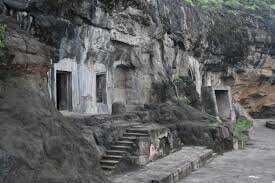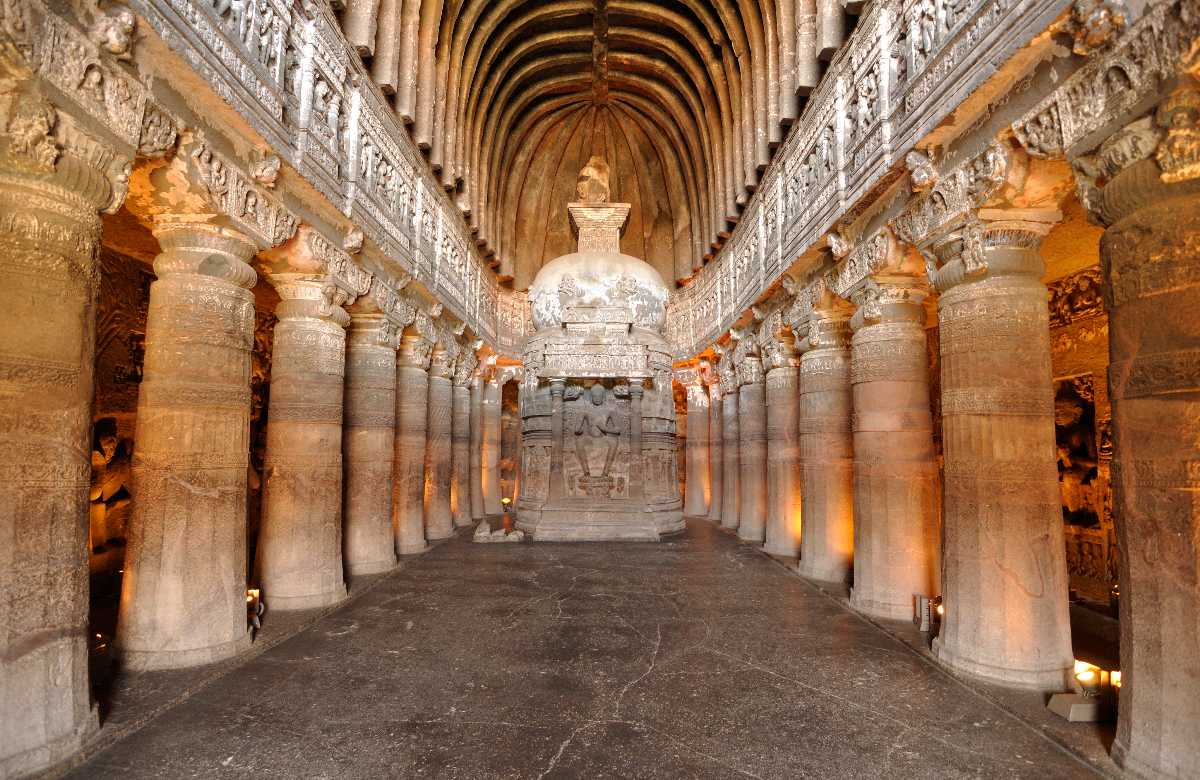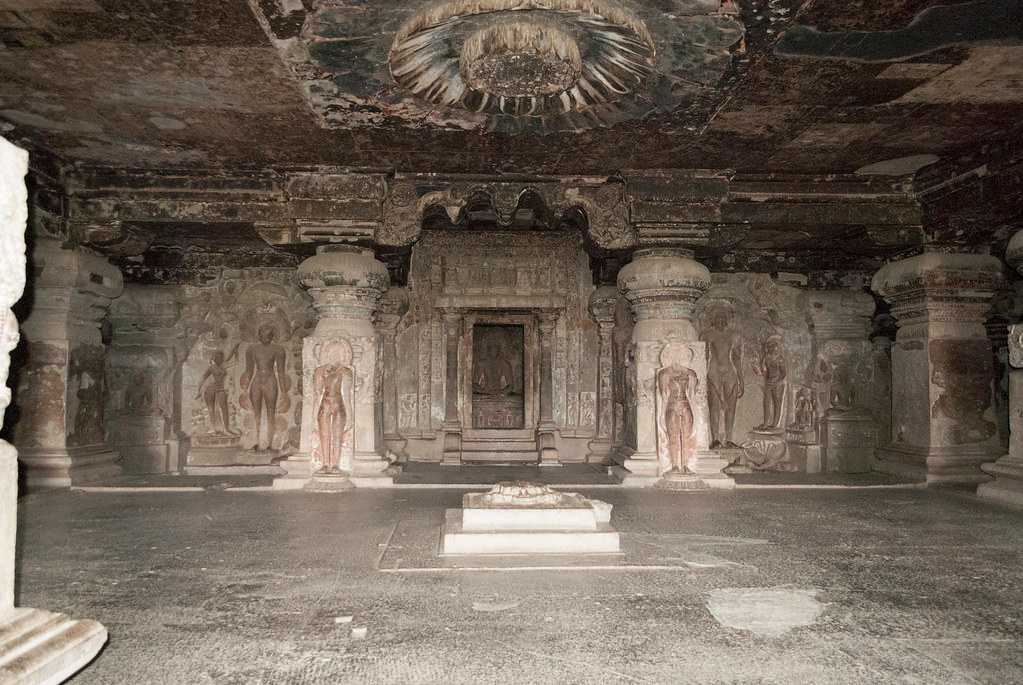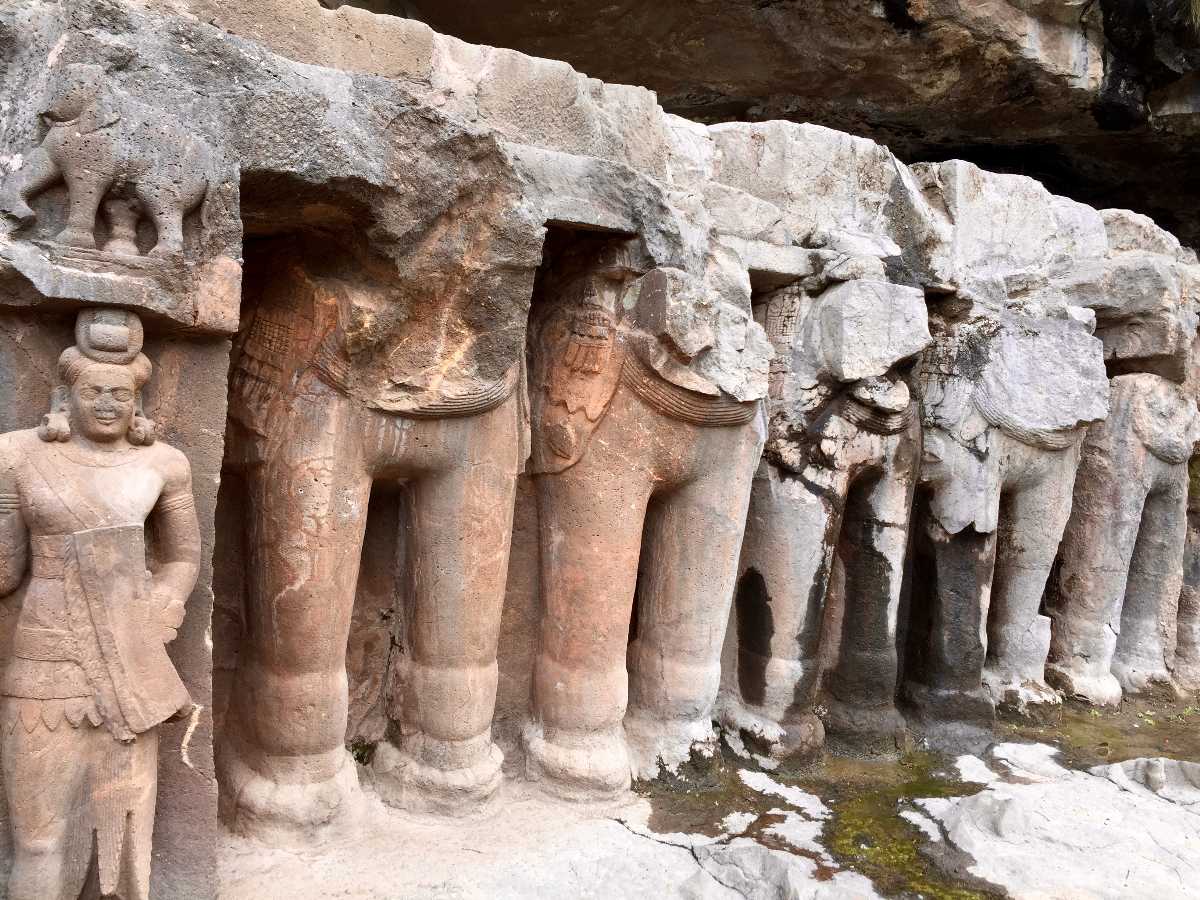Here is a list of caves in Aurangabad, that are mesmerizing!
1. Aurangabad Caves

The division of the cave has been done in such a way that 12 artificial rock-cuts have been divided into three separate groups depending on their location. Group 1 has cave 1 to 5, known as Western Group; group 2 has caves 6-9, known as Eastern Group and group 3 has caves 10-12, known as Northern cluster. The first marks of excavation of caves in Aurangabad can be traced back to the 2nd and the 3rd century. Although because of heterogeneous rock formations, it was difficult at the beginning to excavate on a large scale. Out of all the caves, the most popular of them all is cave 7.
These caves are located within 8 km radius from the railway station and are located behind the very famous Bibi-ka-Maqbara. According to the book, The Iconography Buddhist Sculptures of Ellora by Ramesh S Gupte, there is an inscription in Kanheris cave 4, which confirms that there were 2 caves namely Chaitya and Vihara. Chaitya can be seen today but vihara cannot be found even after these long years. Cave 4 is known as Chaitya cave that was excavated during the Satvahana period. Cave 1 and 3 were excavated during the Vakataka period.
If you are a fan of heritage, then this is a must visit place for you. You will get a great view of the city from the top. These caves show the 1st millennium CE Buddhist artwork with goddesses such as Durga and gods like Ganesha. You can also find traces of Tantra tradition here. Due to the status of world heritage site given to caves of Ajanta and Ellora, one may say that these caves have been overshadowed by them.
Though the sculptures here are smaller compared to Ajanta and Ellora, you can get an idea of what you will see in Ajanta and Ellora caves. Archaeologists have over a period believed that this cave is a missing link between Ajanta and Ellora.
Timing – 9:00 am to 5:00 pm
Entry fee – INR 10 for Indians and INR 100 for foreigners
2. Ajanta Caves

This being declared a world heritage site by UNESCO in 1983, they believe that Ajanta caves are an important piece for Buddhist religious art. As of now, this monument is taken care of by the Archaeological Survey of India. While visiting here, you will find a lot of Buddhist monasteries and worship halls carved over a wall of rock. It is also said that the paintings depict a life cycle of Buddha.
Not only that, but it is also said that monks come here during the time of monsoons. Caves 1,2,16 and 17 hold a lot of importance in the history of Indian wall paintings.
Ajanta caves in Aurangabad is one of the major tourist attractions of Maharashtra. It is nearly 104 km from Aurangabad, It is very similar to the Ellora caves and is much older than that. Now, there is a certain history behind this cave.
It is said that up until 1819 this cave was covered with Deccan forest and during that time an officer from British India found this cave by accident during tiger hunting party. There are a total of 30 caves with five of them constituting Chaityas which is a prayer hall, while the remaining twenty-five of them are Viharas, that is, Buddhist monastery.
Cave 1 - This is the very first cave that you will enter. An open courtyard on the face of the cave is the reason why it has a steeper slope than the rest. Historians believe that the paintings were made under the Vakataka Emperor. The depiction has also been made according to Jataka tales that the previous birth of Buddha was as a royal. What’s worth looking at is the architecture and detailing that comes from an era where modern machinery was far from imagination. So, it is worth wondering how they were created.
Cave 2 - Cave 2 of Ajanta is near to cave 1 whose interior is filled with paintings. The carving of this cave took place between 475 and 477 CE. The major difference between cave 1 and cave 2 is that where cave 1 has a more focus on kingship, royalty cave 2 is more about giving power to women and how it plays an important role in the society. Hence, you will find a lot of carvings here of Hariti, Buddhist goddess of fertility.
Cave 16 - The moment you enter this cave you will find 2 huge elephant figures placed on the entrance. This cave was dedicated to monks. Why is this cave important? Well, it is because it was an influence in the entire architectural network of Ajanta.
Cave 17 – The specialty of this cave is that it is home to the greatest and perhaps the most sophisticated Viraha architecture.
Timings- 9:00 AM to 5:00 PM (Closed on Mondays)
Entry Fee - The cost of a ticket is INR 40 and for foreigners, it is INR 600. The entry is free for kids below 15 years of age.
How to reach – You need to go to Aurangabad first which is 330 km from Mumbai and then from there the caves are around 100 km far on Ajanta Jalgaon road. The nearest railway station is Jalgaon Railway Station
3. Ellora Caves

Ellora Caves, locally known as ‘Verul Leni’ is located in Aurangabad, Maharashtra. One who visits Ajanta caves can also visit this cave as it is located very near to it. Just like Ajanta, Ellora is also a UNESCO World Heritage Site. The major difference in Ajanta and Ellora caves is that while Ajanta mainly features sculptures of Buddha, Ellora showcases 12 caves dedicated to the Buddhists, 17 caves of the Hindus and 12 caves possessing Jain monuments.
These artworks can be traced back to 600-1000 CE period. When you are here, do visit cave 16 which has the Kailasha Temple that is cut through a single largest piece of rock! It is quite fascinating to see because of the intricate details of the temples that are believed to be no work of machines, but a marvel of the men!
The Kailasha Temple is dedicated to Lord Shiva. This temple was constructed by Rashtrakuta king, Krishna I, in 756-773 CE. According to historians, this temple was built in 18 years! The unique architecture of this temple is just like that of Mount Kailash. You will find an image of Nandi facing the Shivlinga. Standing tall over 195 feet, and 145 feet in width, the temple is twice the size of Parthenon in Athens, Greece.
One interesting story about this temple is that the Mughal emperor Aurangzeb tried to destroy this temple and sent 1000 men. They worked for 3 years but could only damage a few statues. Therefore, one can only imagine the strength of these monuments and the efforts it took for the men to have built this place.
Ellora caves are located at a distance of 29 km from Aurangabad. 5 Jain caves were built during the ninth and tenth centuries, and all of them belong to the Digambara sect. There is cave 15 that is known as Dashavatara cave that depicts 10 avatars of Lord Vishnu. Try to visit this place during the month of March as every year during the 3rd week MTDC organizes the Ellora festival in full galore. You will witness some of the most beautiful classical dance and music.
Timings – 9:00 am to 5:00 pm except for Tuesdays
Entry fee – INR 40 for Indians and INR 600 for foreigners and INR 25 for per camera videography
You can find more information about the caves on the official website https://elloracaves.org/caves.php
How To Reach - It is 36 km away from Aurangabad airport and Aurangabad railway station is the nearest railway station. MSRTC and private buses are also available.
4. Pitalkhora caves

Situated on the Western Ghats of Maharashtra, Pitalkhora cave comprises of 14 cave monuments. 4 of the caves are Chaityas and 10 of them are Viharas. You can find beautiful statues of elephants, Gaja Lakshmi icon and many other beautiful statues here. This cave is located at a distance of 40 km from Ellora caves. One will find the mention of Pitalkhora caves in Buddhist chronicles, as well. The inscription can be traced back to the 3rd or 4th century!
Timings- 9:00 AM to 5:00 PMIndia being a traditional country that is known for its long history, visiting a cave would give an idea about the culture and traditions that have formed us. They are not just about rock-cut architecture but it tells you about your history and also gives an idea about the amazing architecture and artisans qualities that prevailed in pre-date India.
Entry Fee- INR 10 is the entry fee for Indians and INR 100 for foreigners.
How To Reach - Jalgaon is the nearest railway station at a distance of 60 km.
